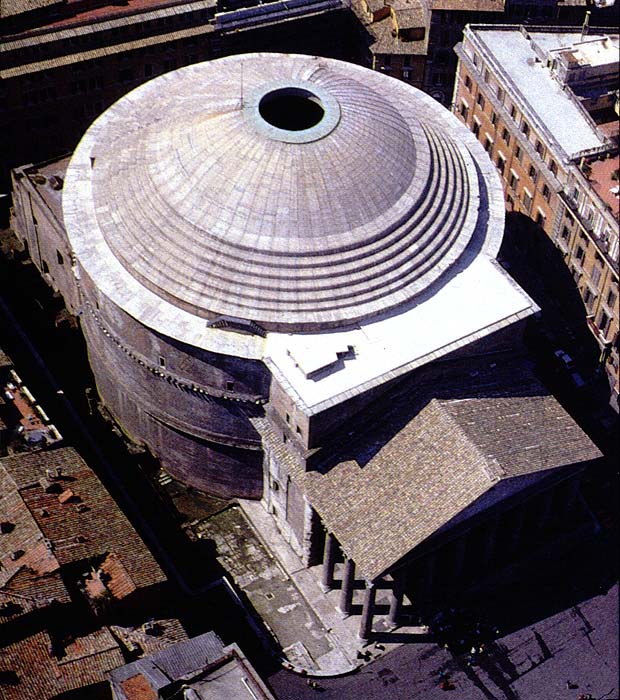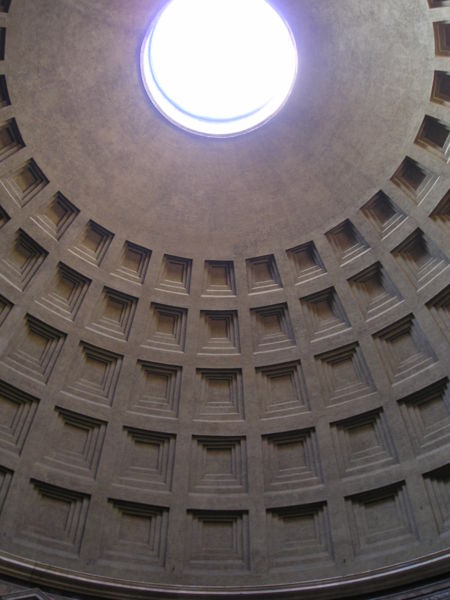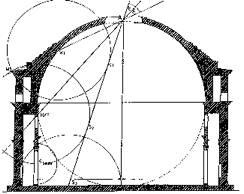The Pantheon’s great dome is still something of a mystery. Such a mass of concrete seems like it would crumble under it own weight, yet the dome endures thanks to Roman architectural innovation. It gets thinner and lighter as you move from the base to the top.
The Pantheon dome measures 43.2 meters in diameter. It would be the world’s largest for more than a millennium, until Filippo Brunelleschi built the Cathedral of Florence’s dome in the 15th Century.


The interior of the dome contains coffers, small niches cut out to make it lighter. They are a necessary architectural concession because the dome has no internal supports.
In the very top of the dome is a 9 meter diameter circular opening called the oculus, around which are five rows of ceiling coffers. The height of the circular opening from the floor is 43.2 meters, the same as the inner diameter of the room.
In order to build a free-standing dome, the Romans not only used lighter stones as they approached the top, but also the walls become progressively thinner to a thicknes of only 1.2 meters around the oculus.
The height from the floor to the oculus is 43.2 meters, the same as the inner diameter of the dome. This gives the Patheon a mathematical symmetry that allows a sphere to be inscribed inside the interior volume.
